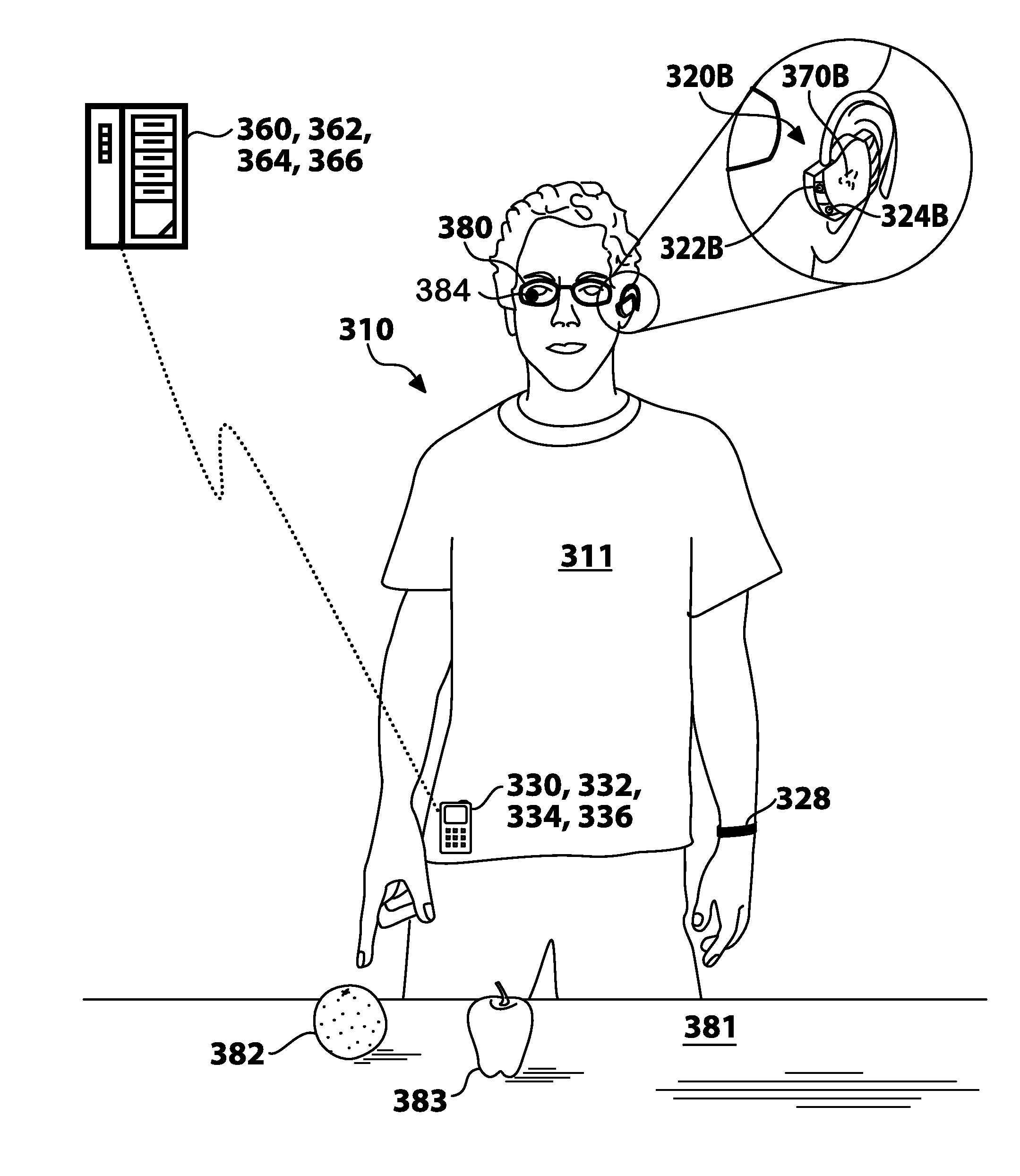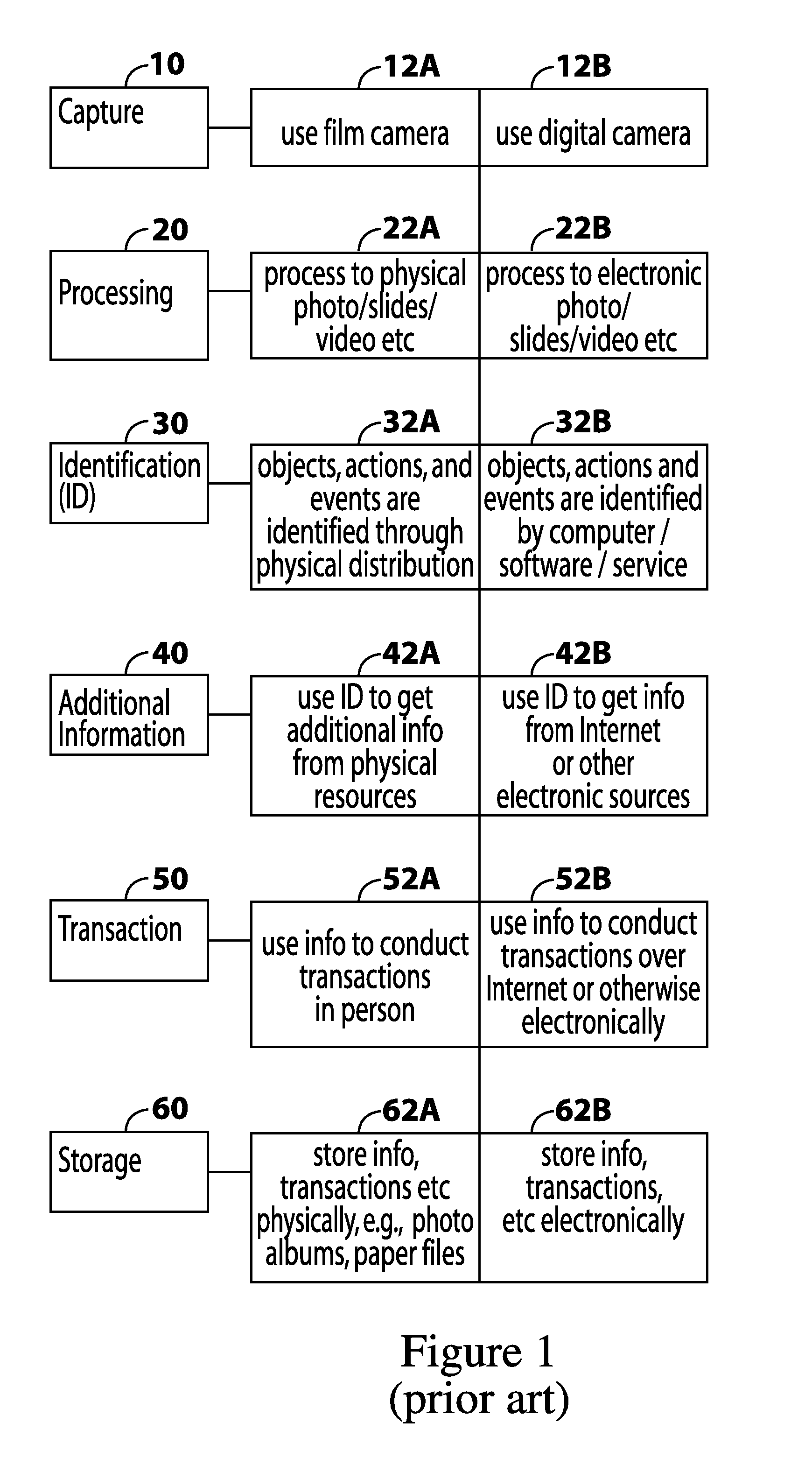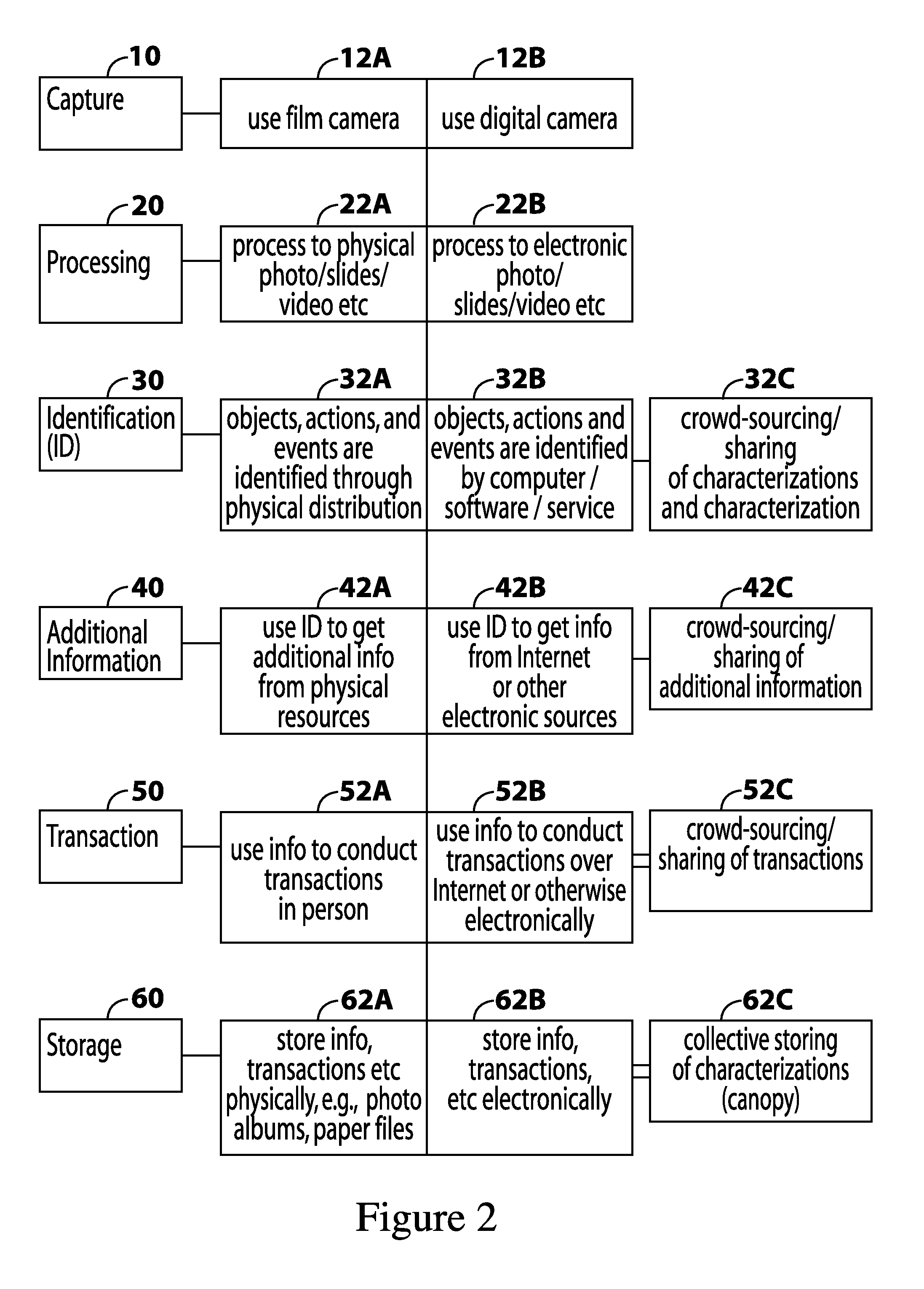There are, of course, numerous real-life communities that rely on face-to-face encounters, but often disparate interests, geographic separation, age, gender and other differences can make real-life communities difficult to access or maintain.
Facebook™ and other
social media have been successful in
filling in some of the void, but many individuals still find that currently available, electronically accessed communities are poor substitutes for real-life companions.
That goal has been depicted in science fiction, but has never been realistically enabled.
Indeed, such devices would typically operate even if the wearer is asleep or unconscious.
But the users are not passively provided with the underlying crowd-sourced data; they must take some affirmative action (e.g., running a search) to use the information in any meaningful way.
That situation falls outside the scope of crowd-sharing (as the term is used herein) because any information overheard cannot be utilized by the attendees in any meaningful way without taking the active step of understanding what was said, or in some other way interpreting the
noise.
But top-down implementations for handling images, sounds, and other types of information are inherently more restrictive, and less dynamic than bottom-up systems, and are decidedly suboptimal for use as personal companions.
Users cannot add new parameters that might be relevant for them, such as preference for large or small firms, preference for night or day shifts, need for flex time, and so forth.
Although it was never admitted to be the case, the problem was apparently that widespread adoption of that technology would likely have significantly reduced Google's AdSense™ revenue.
In addition, GoogleBase was less effective than it could have been, because it only contemplated half the concept—crowd-sourcing of the parameters.
But there again the systems fail to crowd-source parameters.
The strategy of crowd-sourcing values, but not parameters, typically results in over-inclusive results sets.
But both of those solutions are themselves top-down approaches that are relatively static and inflexible.
Such strategies are inherently resistant to evolution, and are therefore not conducive to developing effective personal companions.
Despite hundreds of thousands of dollars of effort, however, they were completely unsuccessful in finding a viable solution.
They failed to apply the concept of crowd-sourcing characterizations to information in general, using crowd-sourced parameters.
And if consumers were allowed to crowd-source links for products and services however they saw fit, a given bar code or other symbol might well become linked to images, characterizations and other information that are wholly unfavorable to the company owning the symbol.
Those of ordinary skill would expect that any service that allowed the public to do that would quickly lose advertising revenue from of the owners of those symbols.
But those uses are all one-off searches; they do not embody persistent collection of information.
Similarly, Google Glass™, GoPro™, Countour™ or other Point of View (POV) camera can collect image and sound data on a persistent or continuous basis, but the data is not interpreted using crowd-sourced parameters, and is not distributed by crowd-sharing.
They do not address how context information could be used in storing persistently recorded
ambient data.
One huge hurdle is that the wide range of viewing perspectives and contexts accompanying persistently recorded
ambient data can make even mere identification of objects, actions, events and thoughts extremely difficult.
Accordingly, they would not want users to characterize
ambient data in a crowd-sourced manner because that would
undercut the ability of the infrastructure provider to extract monies from the vendors.
Even an ordinary
consumer would likely not appreciate the value of crowd-sourced identifications of such things.
Still another difficulty is that persistently recorded ambient data often involves a combination of different modalities (image, speech, music, animal and other sounds, smells and even vibrations).
Those other modalities may well provide needed context, yet involve information that is not readily understood or properly appreciated, such as person talking in another language, a
facial expression or tone of voice, or perhaps background sounds of birds.
That would only clog up his mind.
For example, a person might well want to forget details, or even the existence, of a given event because the event was embarrassing or painful.
That isn't necessarily helpful.
If different instances of the same
system produced variant results under identical circumstances, a person trying to sneak contraband onto a plane could never be sure of passing a particular checkpoint.
When he stops to buy some unneeded item, his personal companion might admonish him about spending too much money.
But those systems are highly simplistic, and are of limited use because of the almost non-existent capability for sorting and filtering of the comments.
That technology, however, stopped short of teaching how to provide
purchasing and other guidance to consumers when a display screen is inconvenient or unavailable.
Most recently, Google™ has even blurred the distinctions between advertised records and search-ranked records, making the advertising more effective from the advertisers' point of view, but potentially reducing the value of the search results to the user.
 Login to View More
Login to View More  Login to View More
Login to View More 


